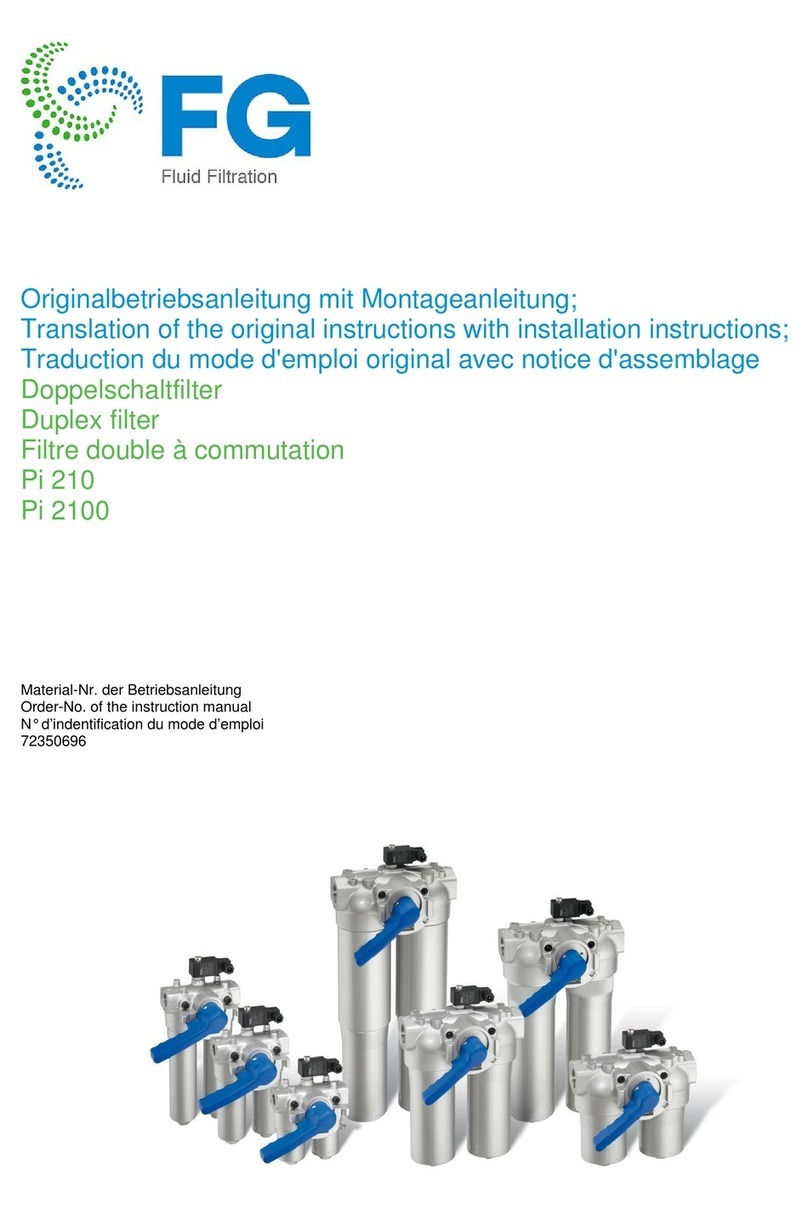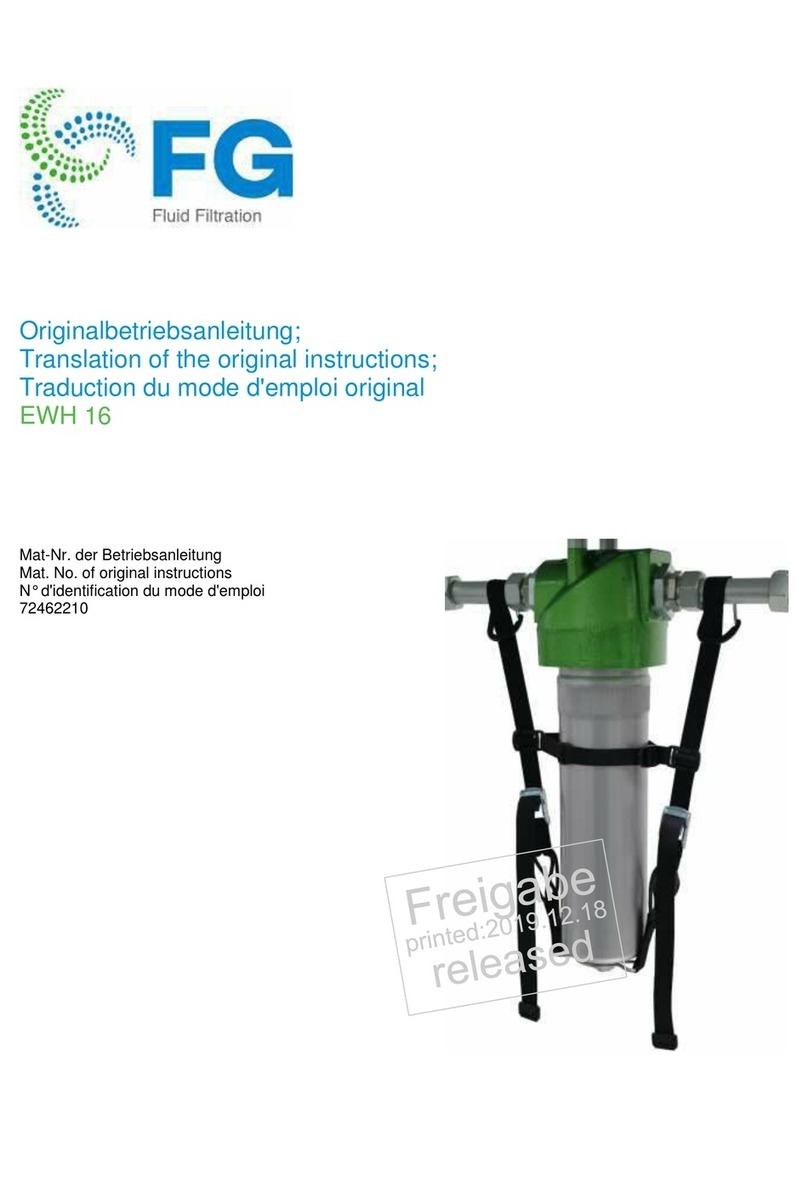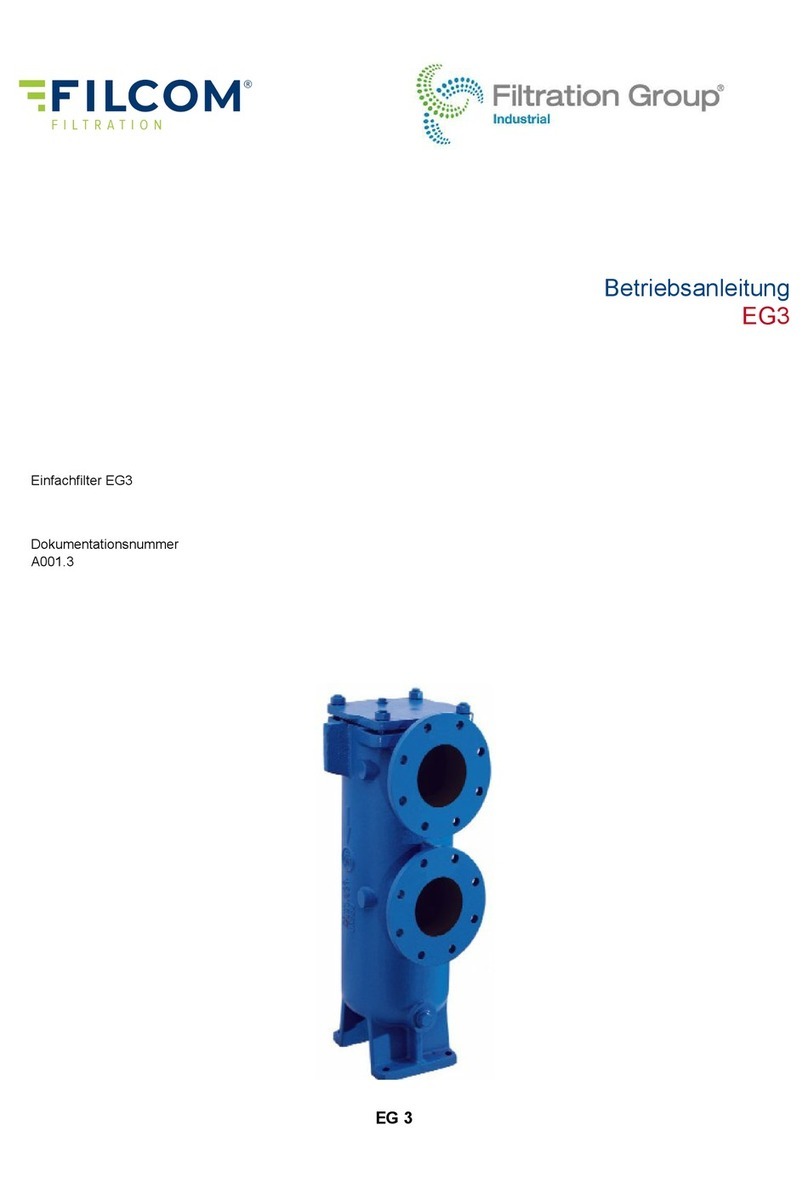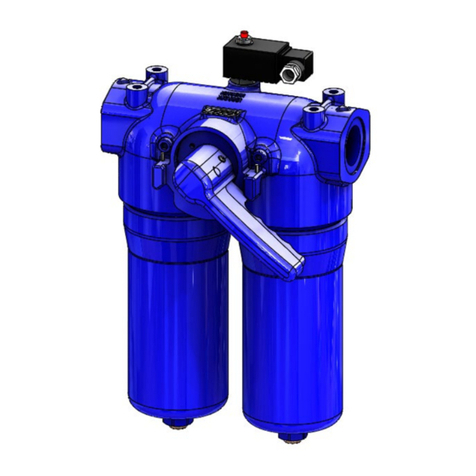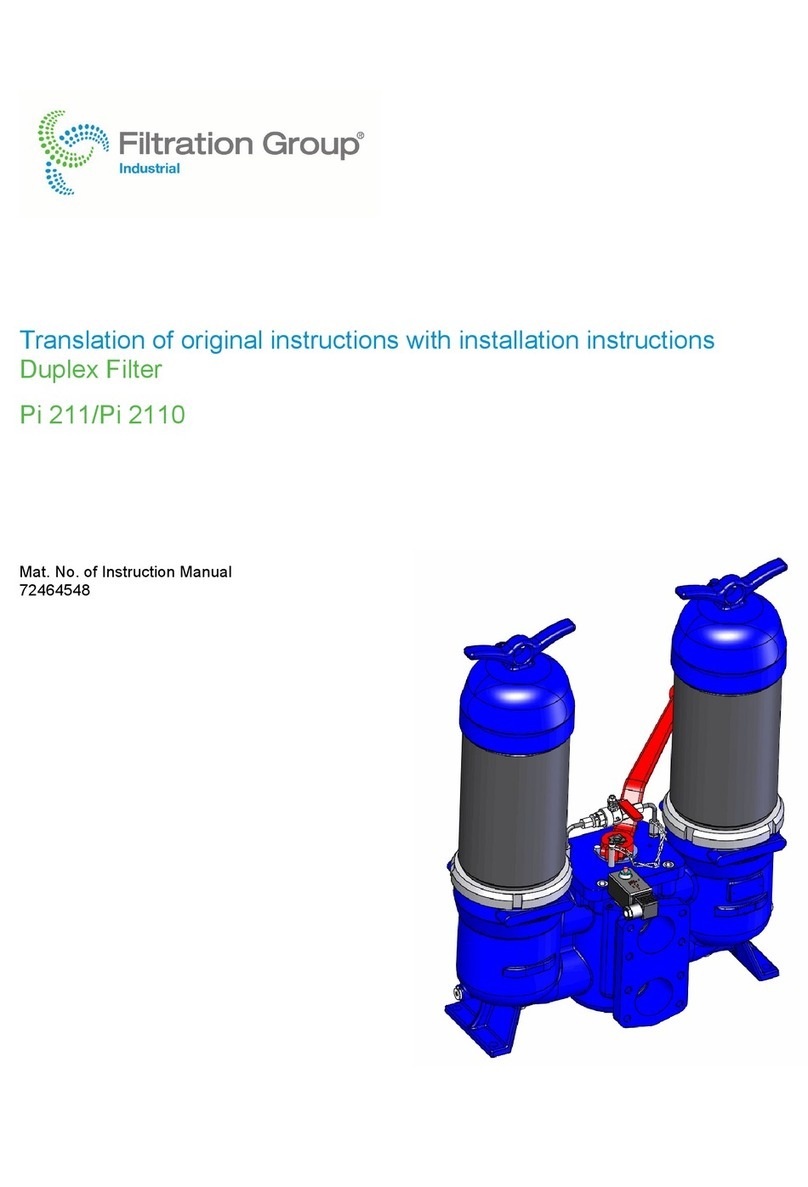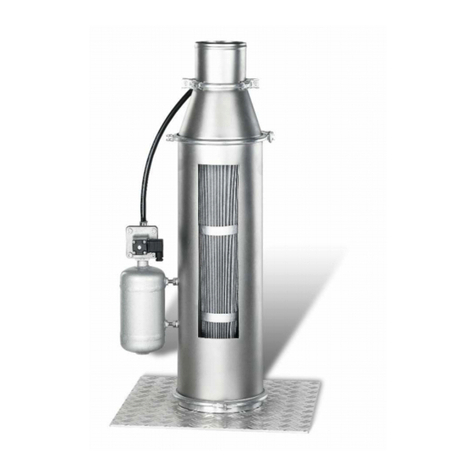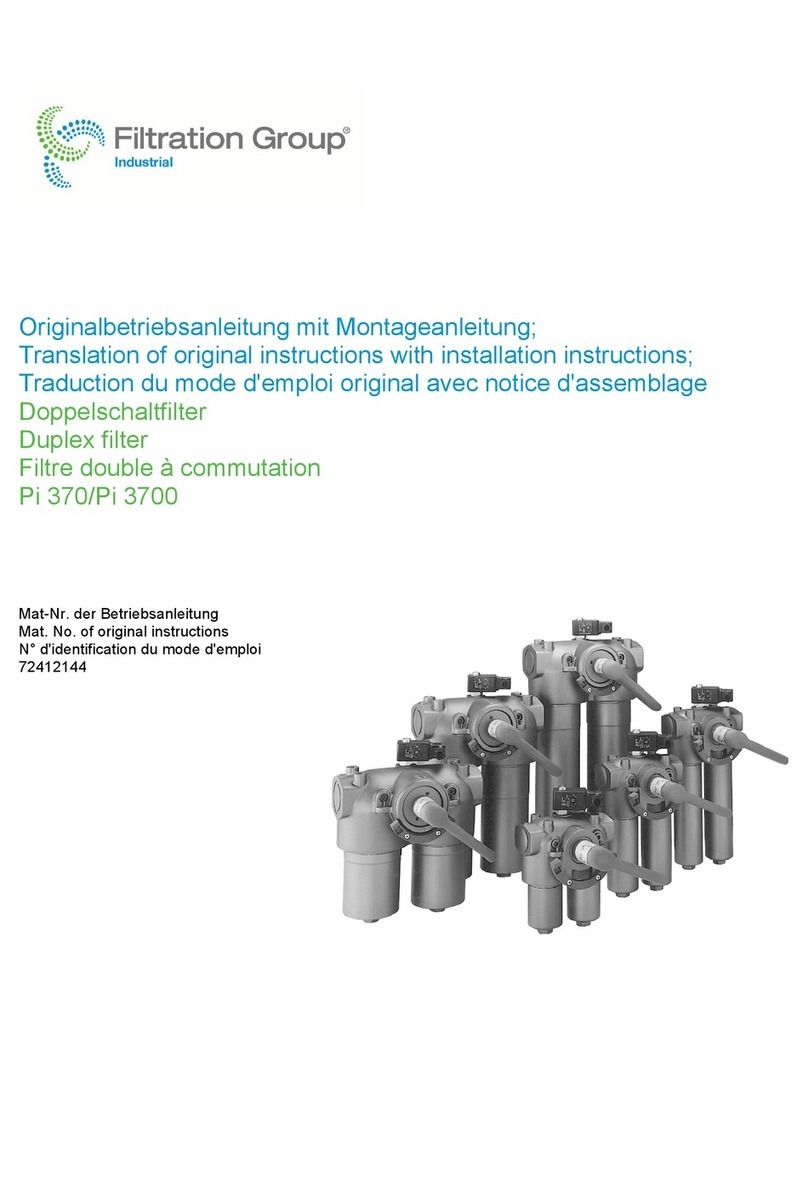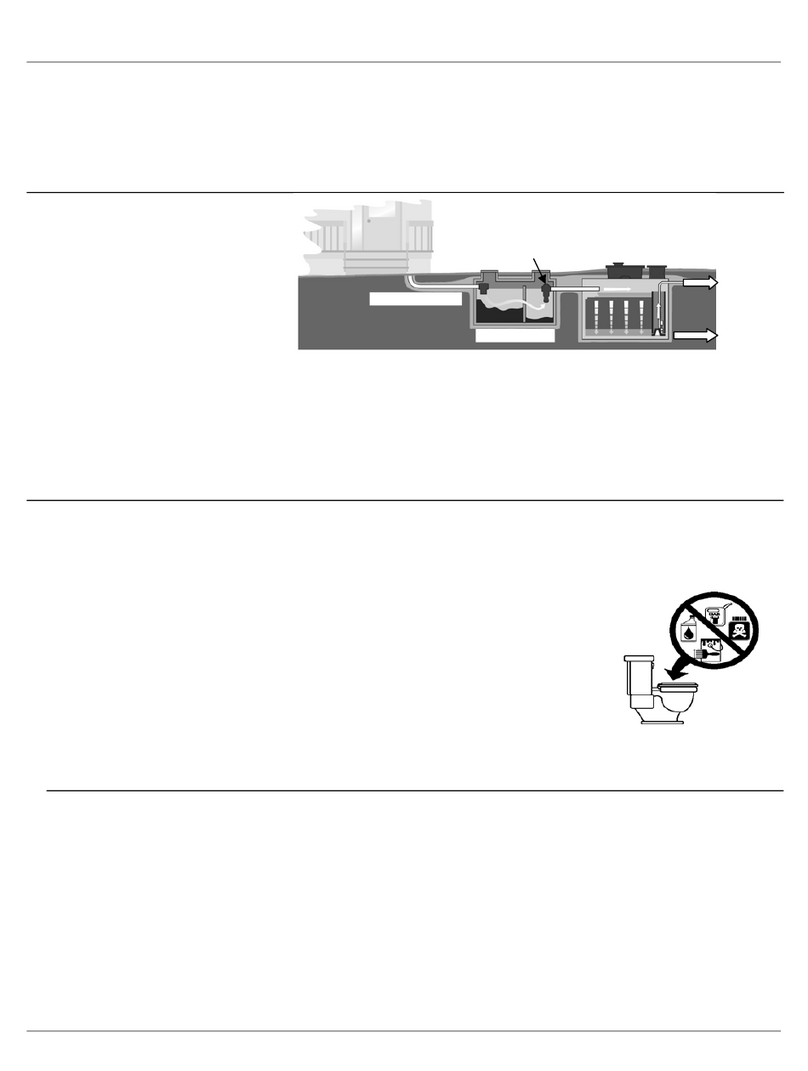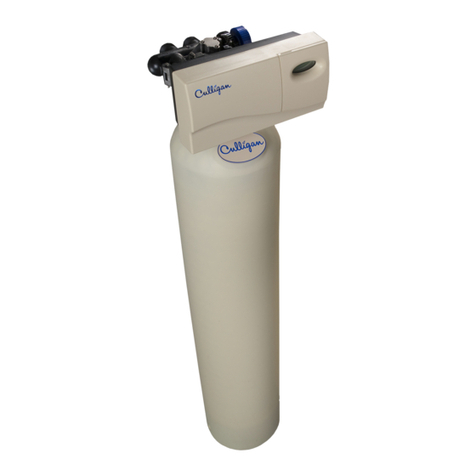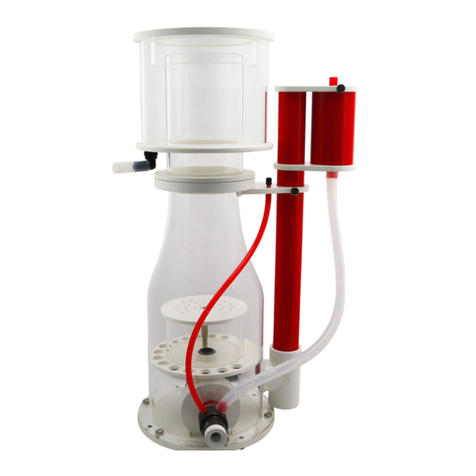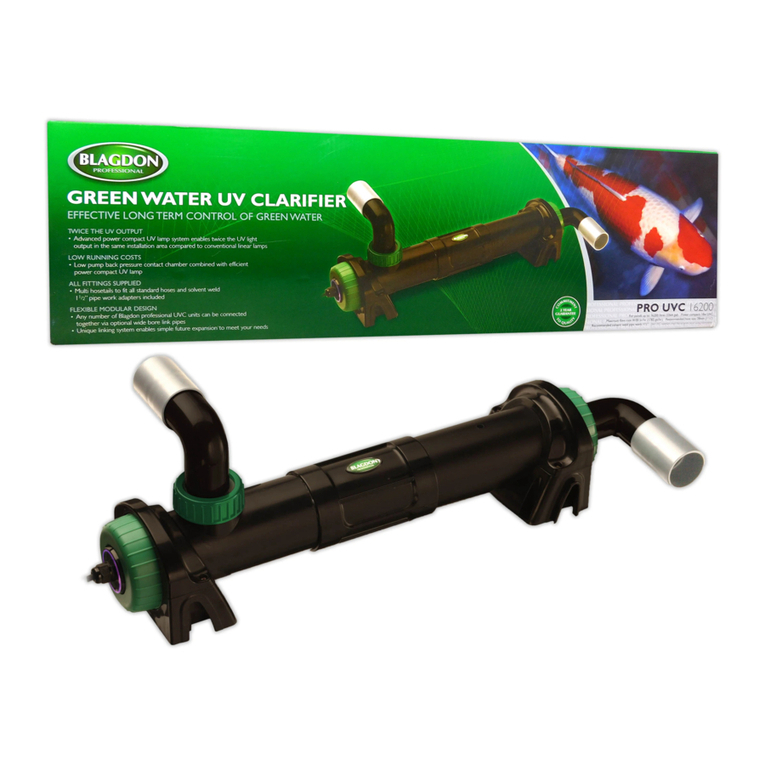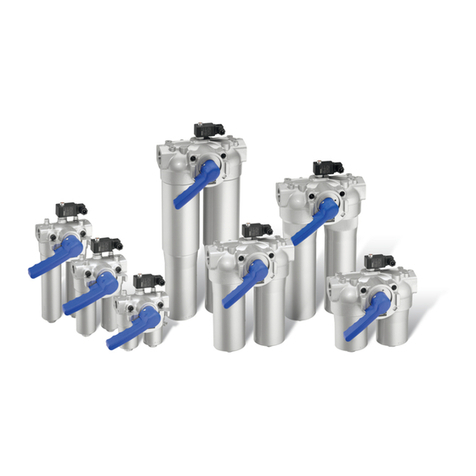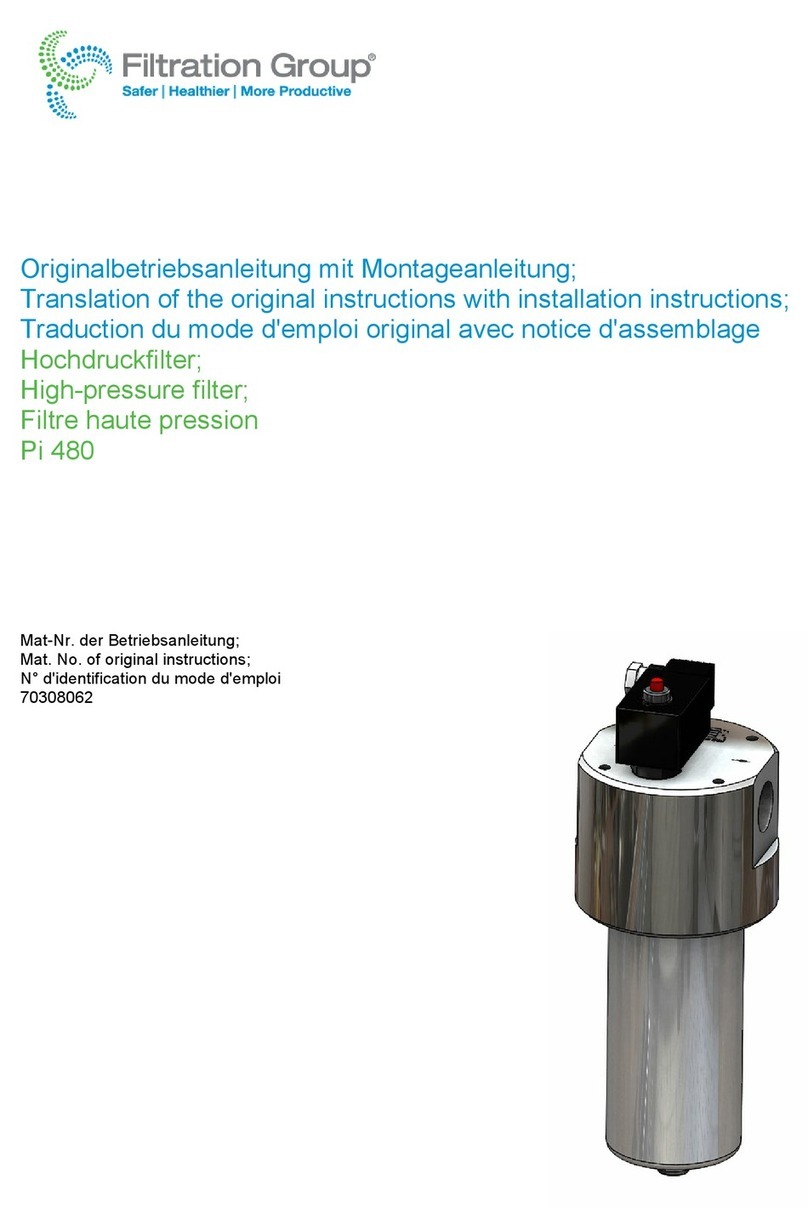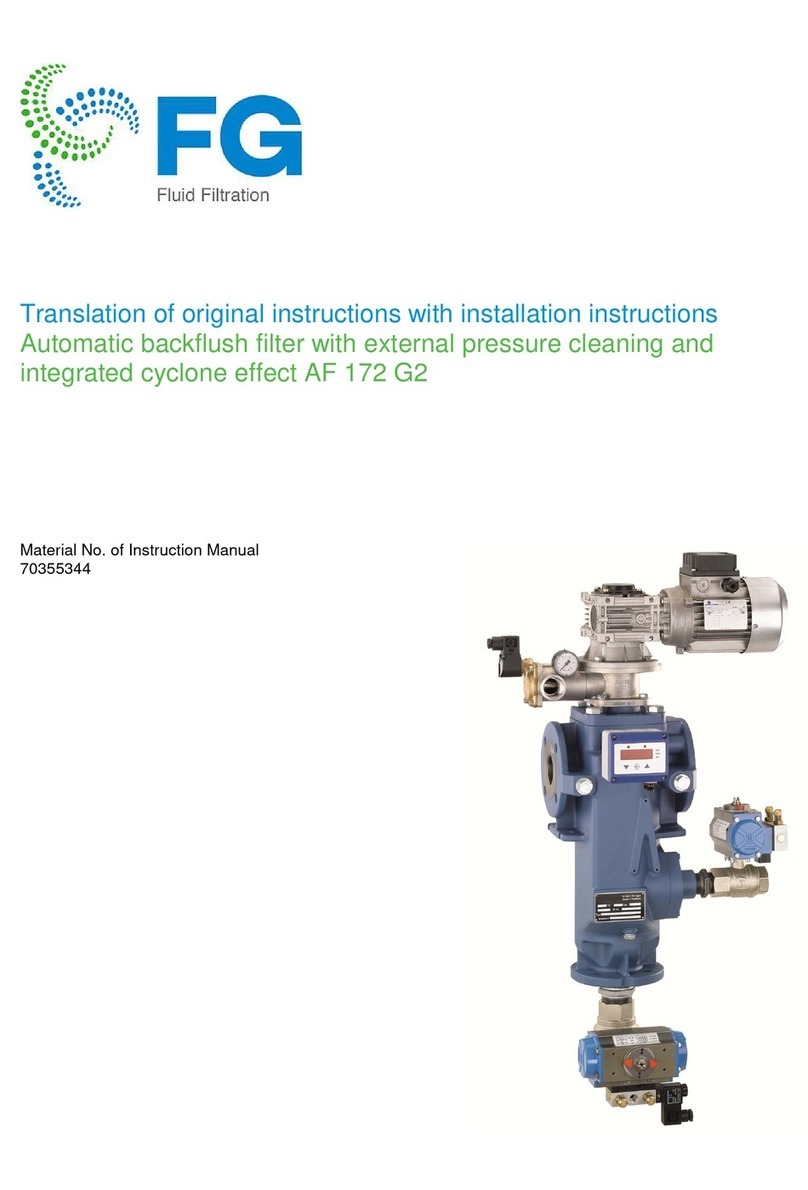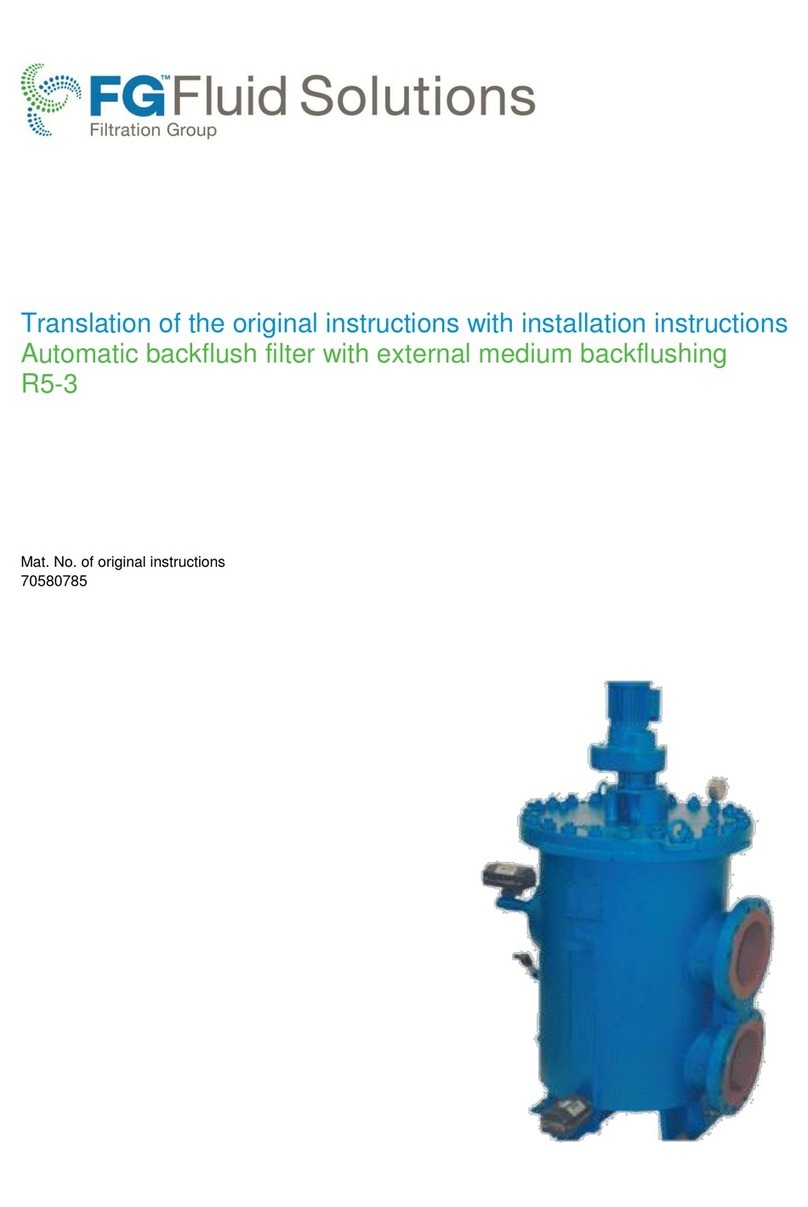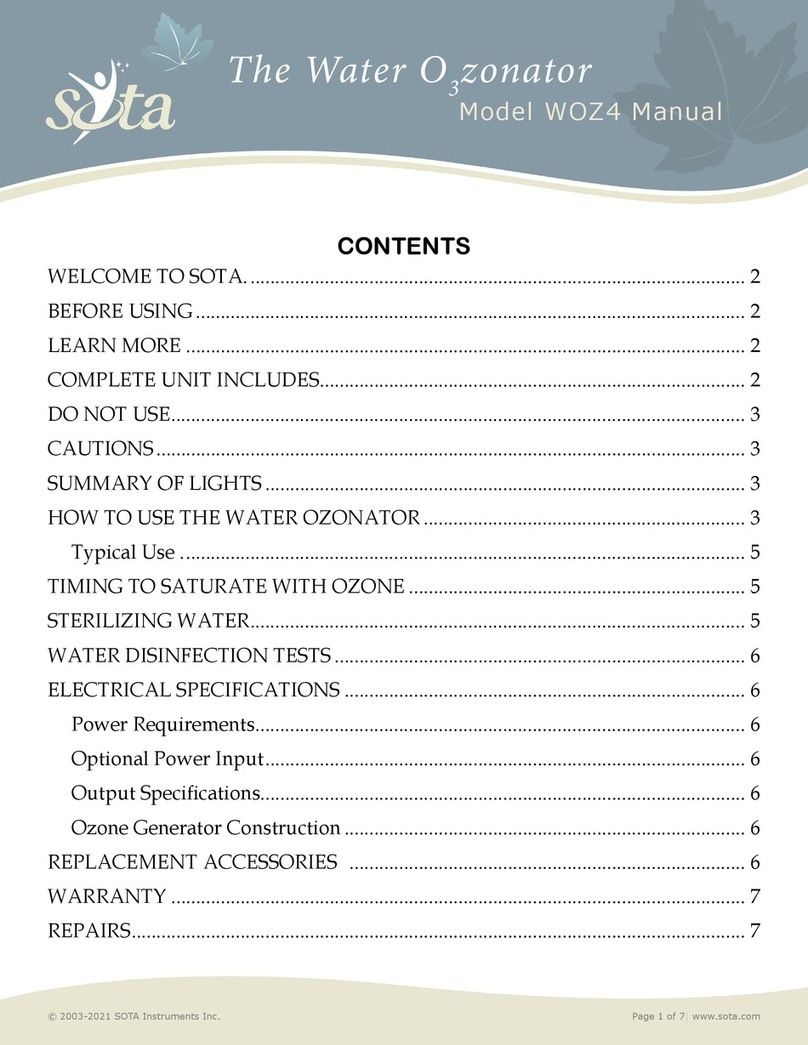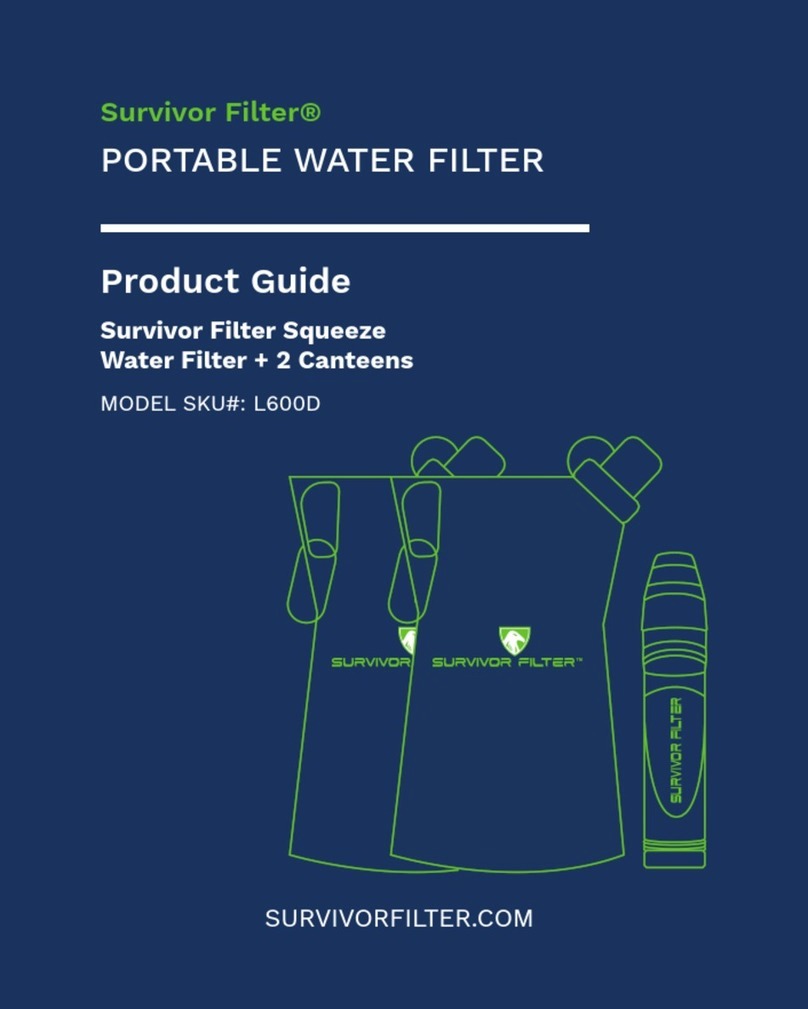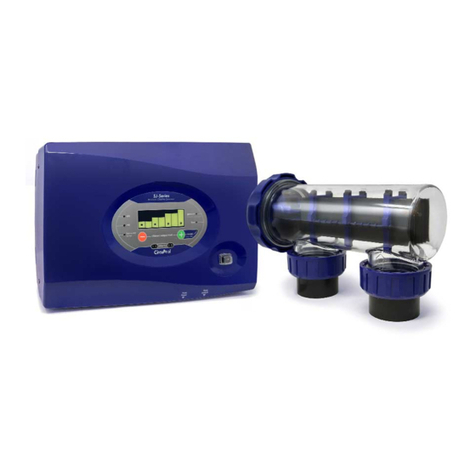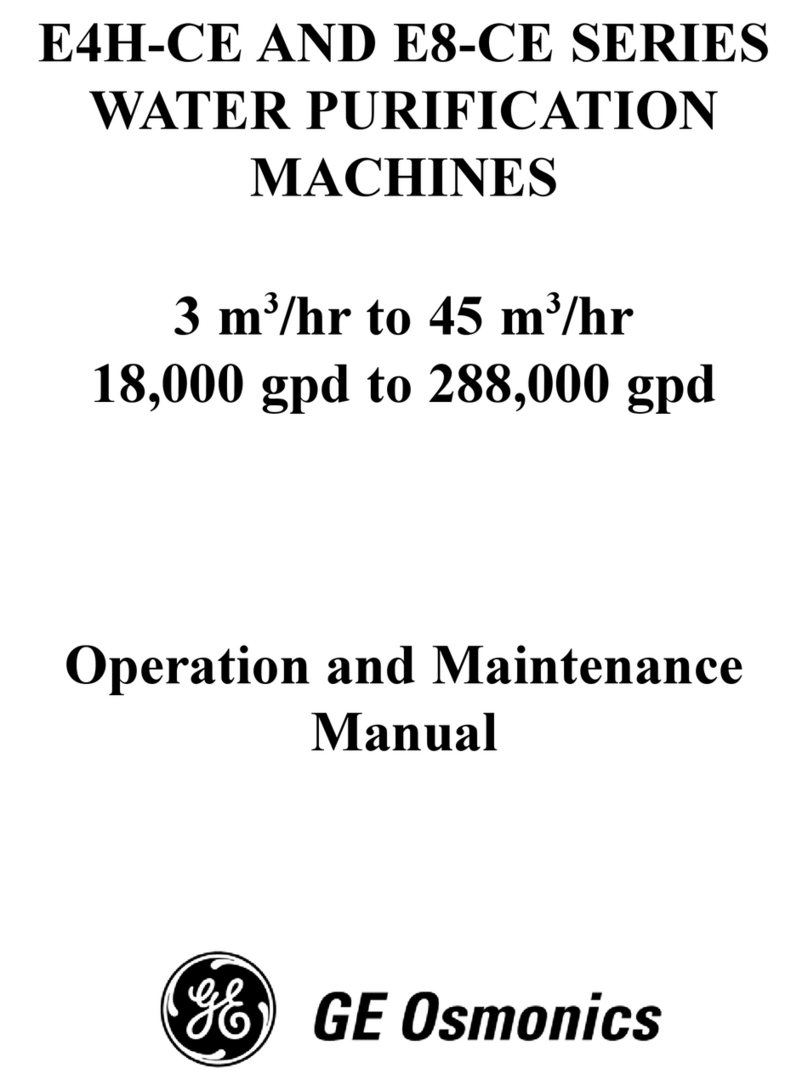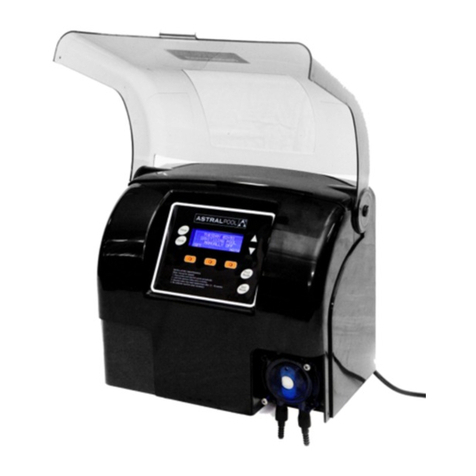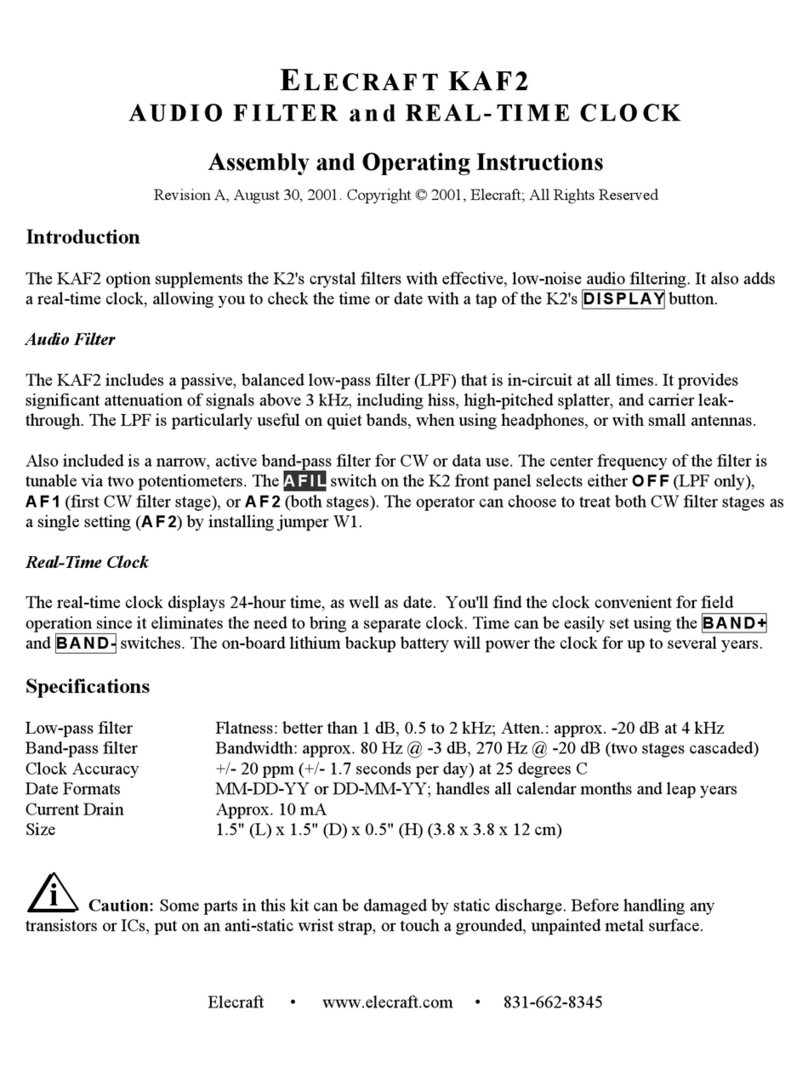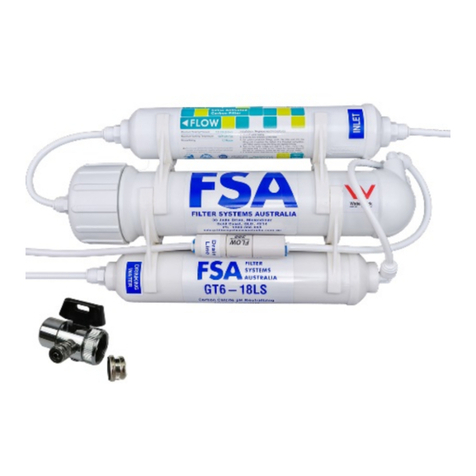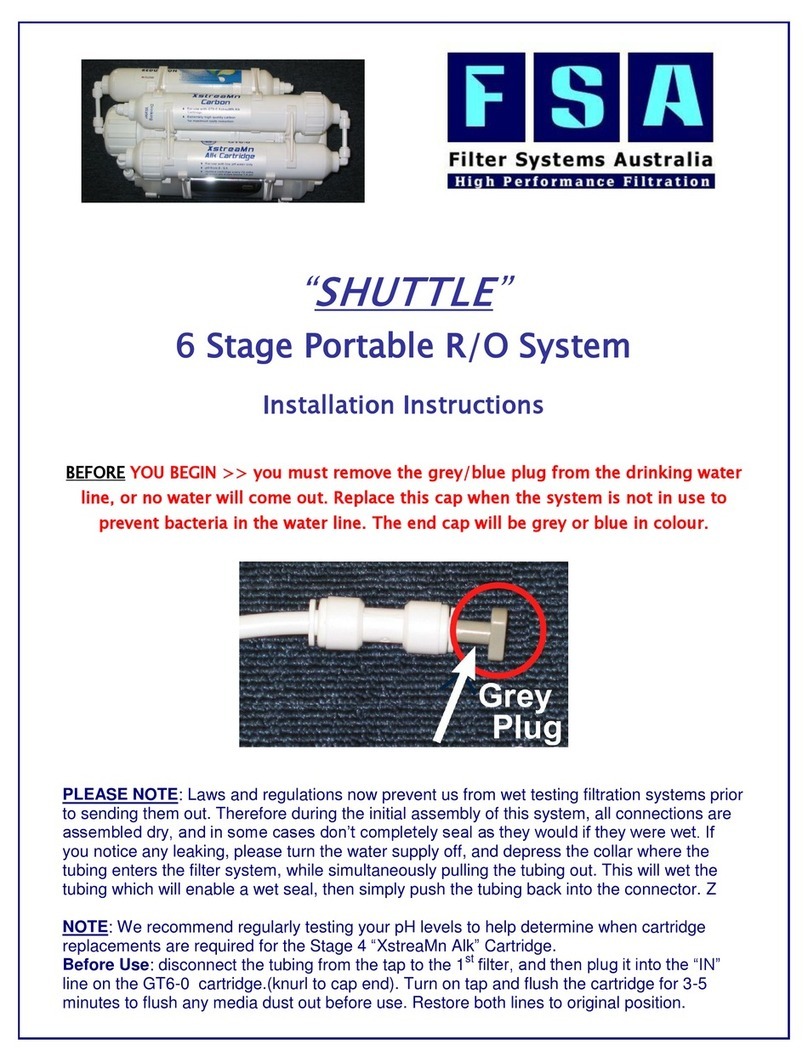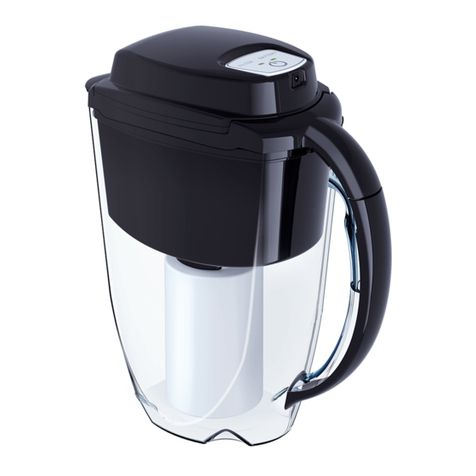
FACET FILTER-SEPARATOR SERVICE MANUAL
©2018 Facet has a policy of continuous product research and development and reserves the right to change design and specifications without notice.
www.processtechnologies.filtrationgroup.com 1-(800) 223-9910 1-(918) 272-8700
Sep-19 Setting the Standard for Aviation Fueling TM 2
For Installing, Operating & Servicing Filter-Separators
This Facet filter-separator is basically a cylindrically shaped
pressure vessel designed specifically to remove solid
contaminants such as dirt, rust, scale, sand and metal
particles as well as remove emulsified, free and entrained
water from liquid and air/gas product streams.
Removable access opening covers are provided to facilitate
the replacement of the filter elements contained inside the
main body of the unit and to permit cleaning the interior of
the vessel.
Suitable mounting supports are provided for anchoring the
unit. Inlet, outlet, vent and drain connections are provided on
all units. The size, type and location of the connections are as
specified to suit the installation requirement.
The nameplate attached to each unit contains important
information such as model number, serial number, operating
pressure, flow rate, filter element type and change-out
pressure. Be sure to send nameplate information to the
nearest representative of Facet or to the Tulsa office when
ordering replacement parts or for additional information
regarding technical problems related to the Facet equipment.
Remove filter-separator from shipping crate and discard all
protective wrapping and packing material. Remove flange
face and thread protectors from all connections.
Remove access covers and inspect interior components for
possible damage during shipment. Replace any damaged
NOTE: Units shipped without filter elements installed will be
tagged with a notice calling attention to this fact.
Check hex nuts on element mounting rods to be sure that
elements are securely mounted. Tighten nuts with torque
wrench to 60 in-lbs (5 ft-lbs) for separators and 360 in-lbs
(30 ft-lbs) for coalescers.
If no damage is found to exist in the unit, be sure to place
cover seal in proper location before bolting covers. Tighten all
bolting evenly and securely.
Provide suitable level concrete slab or metal platform and
anchor bolts of adequate size and bolt unit in place securely
before proceeding with connecting piping. It is recommended
that the filter-separator be installed into the system with a
minimum number of turns and fittings to minimize any
additional turbulence in the inlet connecting piping. This will
eliminate any further emulsification of the product and water
in the incoming product line, as well as minimize total system
pressure loss.
Be sure to correctly identify the inlet and outlet connections
of the filter-separator before connecting the unit in the
system. The unit will not perform correctly if the
connections are reversed.
All piping leading to and from the filter-separator must be
aligned as closely as possible with the connections on the unit
to avoid over stressing the body connections or flanges. Be
sure to use the correct gaskets between flanged connections.
Tighten all connection bolting evenly and securely.
If a positive displacement pump and/or automatic product
discharge control valve is used in the system, it is imperative
that adequate bypass piping around the filter-separator be
provided or a relief valve be installed on the filter-separator
in order to prevent excessive pressure which can develop
when the discharge control valve is closed.
Provide suitable vent and drain lines to conduct the fumes
and separated water away from the operating area.
Shutoff valves should be provided in all pipe lines leading to
and from the filter-separator to isolate the unit from the
piping system for servicing the unit or complete removal of
the unit from the process system.
Normally, all accessory items such as pressure gauges,
automatic air eliminators, liquid level gauges, relief valves,
automatic control valves and electric heaters are factory
installed before shipment. When such items are shipped in
separate containers, be sure to inspect all items for possible
damage before installing them to the filter-separator.
All tubing lines should be formed with care to prevent kinking
or flattening of the tubing.
After all piping connections have been made and all accessory
items installed, a check should be conducted before
submitting the unit to a fluid test. The following suggestions
and recommendations should be observed before conducting
the fluid test.
1. Make certain that all anchor bolts are tightened
securely.
2. Inspect all flanged connections to be sure that the
proper gaskets have been placed between flanges.




















